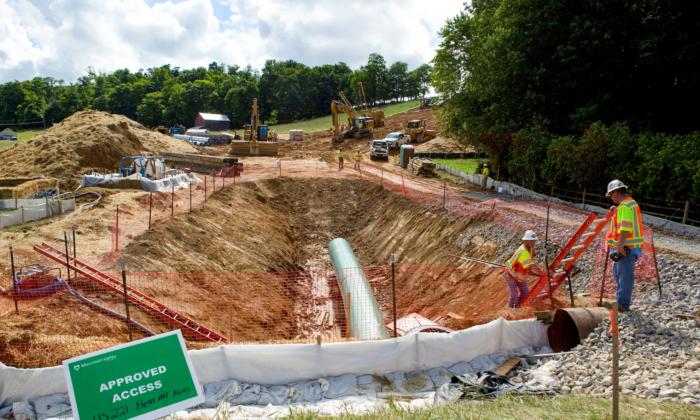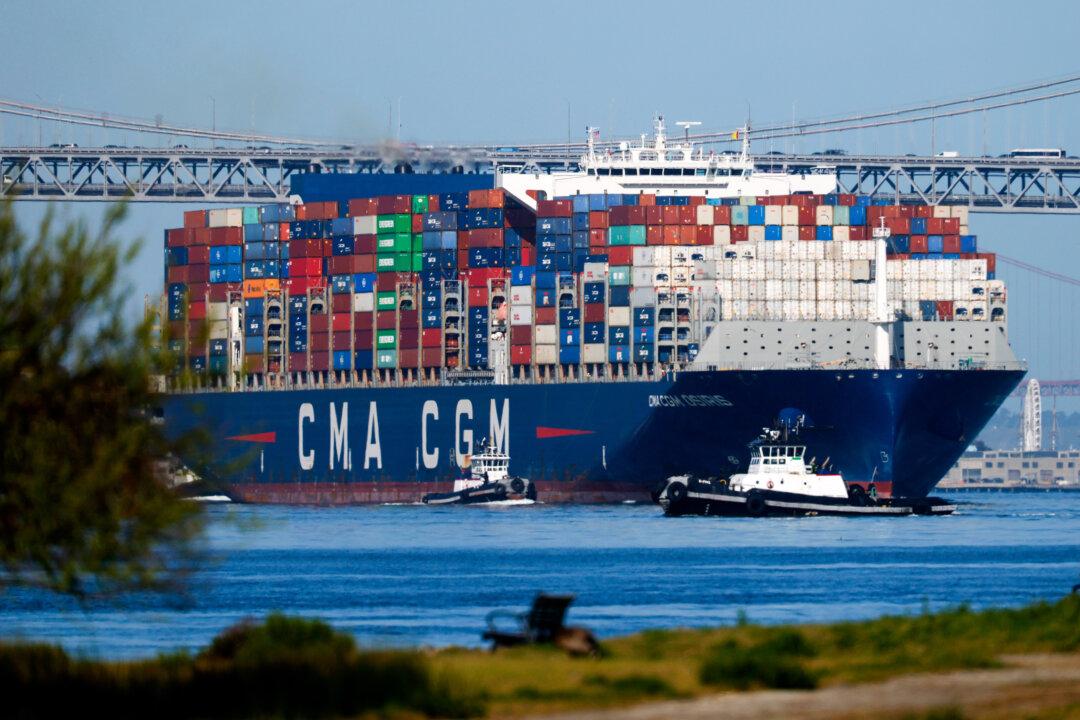Three days after receiving final federal approval and nearly a decade after it was first proposed, the 303-mile, $7.85 billion Mountain Valley Pipeline is funneling natural gas from West Virginia into Virginia, where it will boost fuel reserves to power mid-Atlantic electric utilities.
The Mountain Valley Pipeline began operating on June 14, ending years of legal contention, regulatory debate, and environmental protests.
“This is an important and long-awaited day for our nation and the millions of Americans who now have greater access to an abundant supply of domestic natural gas for use as an affordable, reliable, and cleaner energy resource,” said Diana Charletta, president and CEO of Equitrans Midstream Corp., which spearheaded the joint project with builder RGC Resources and regional power providers NextEra Energy, Consolidated Edison, and AltaGas.
“Natural gas is an essential fuel for modern life, and, as a critical infrastructure project, the Mountain Valley Pipeline will play an integral role in achieving a lower-carbon future while helping to ensure America’s energy and economic security for decades to come,” she said.
Equitrans proposed the Mountain Valley Pipeline in 2015. Regional utilities said the 42-inch-diameter pipeline’s capacity to deliver 2 billion cubic feet per day of natural gas—approximately one-third of West Virginia’s marketable production—would ensure energy stability and lower electricity costs in mid-Atlantic states.
The Federal Energy Regulatory Commission (FERC), an independent federal agency that regulates interstate transmission of electricity, natural gas, and oil, including the electric grid and pipelines of all types, approved it in 2017. It broke ground in 2018.
The pipeline drew sustained protests by environmental groups—one climate activist spent 932 consecutive days in a tree—and a gamut of lawsuits challenging it across an array of regulatory and statutory issues, including the use of eminent domain, impacts to forests, waterways, and wildlife, and Virginia environmental justice laws.
The Fourth U.S. Circuit Court of Appeals twice issued rulings halting construction. As a result, the pipeline is more than six years behind the original schedule and at least $500 million over budget.
The delays and legal entanglements were seemingly resolved when Sen. Joe Manchin (I-W.Va.), the retiring Senate Energy and Natural Resources Committee chair who recently left the Democrat party by declaring himself an independent, agreed in 2022 to support President Joe Biden’s green energy initiatives in exchange for approving the pipeline.
Nevertheless, in April 2023—with 283 pipeline miles completed—the Fourth Circuit delayed the project a second time when it questioned if FERC had adequately assessed “unexpectedly severe erosion and sedimentation along the pipeline’s right-of-way.”
As part of the June 2023 Fiscal Responsibility Act negotiations, Mr. Manchin again secured the administration’s agreement to not oppose the project.
Equitrans said in January that the pipeline was 94 percent finished. However, a May 1 rupture at Bent Mountain in Roanoke County, Virginia, during hydrostatic testing delayed construction of the final leg of the pipeline over water crossings and rugged mountains in West Virginia and Virginia.
In mid-May, the company announced that the project was “mechanically complete” and scheduled to start operations, awaiting a final FERC inspection.
The company “has adequately stabilized the areas disturbed by construction and that restoration and stabilization of the construction work area is proceeding satisfactorily,” Mr. Turpin said in the letter.
The pipeline will move methane gas from the Marcellus and Utica shale fields in Wetzel County, West Virginia, to Pittsylvania County, Virginia. It is a joint venture between Equitrans, NextEra Energy, Consolidated Edison, and AltaGas. RGC Resources built the pipeline.
The next phase is an extension into North Carolina, although those plans are in flux following postponements and revisions that have shortened and rerouted its originally planned 75-mile track.







